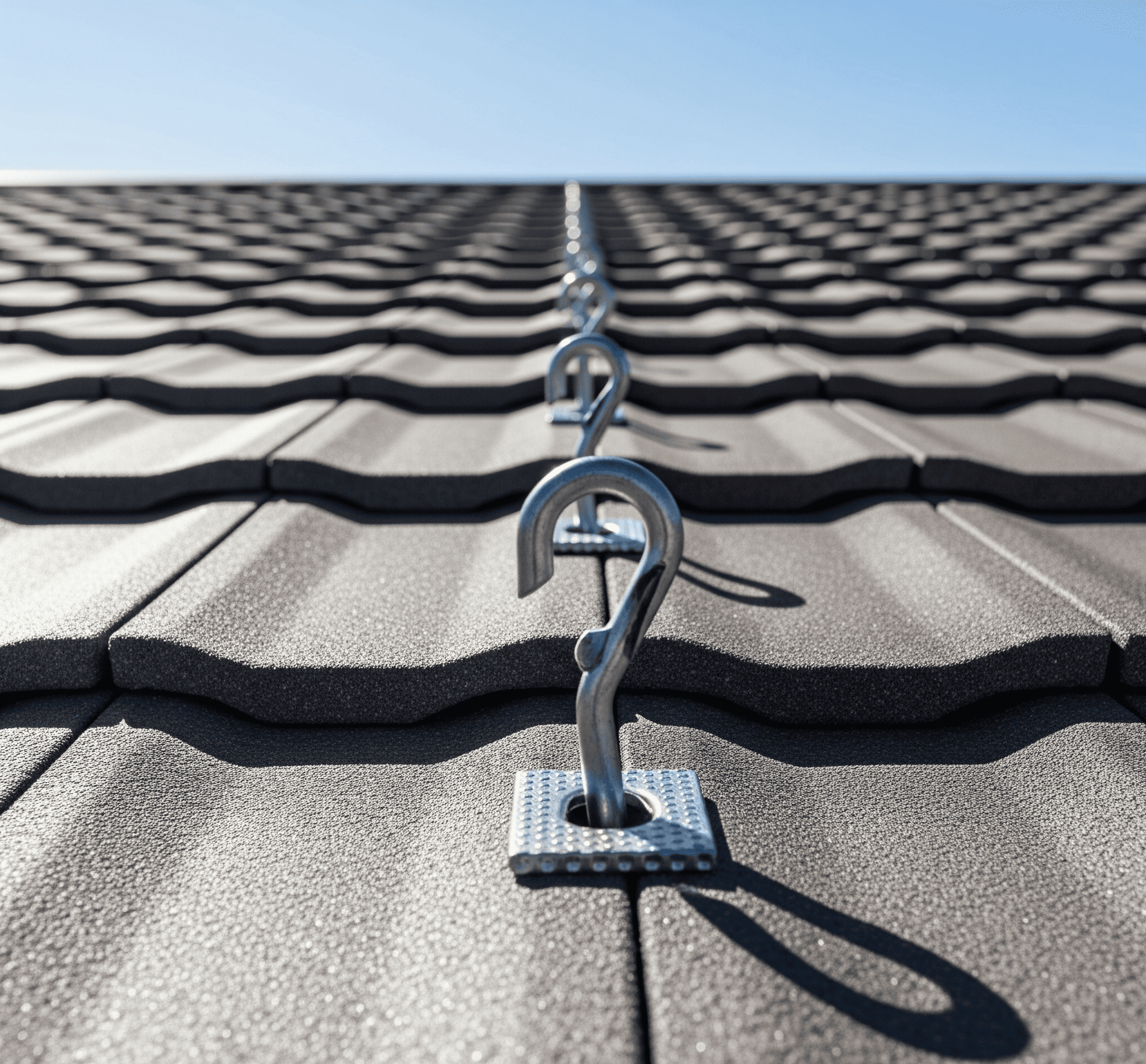Kingsgrove Branch:
Hook Roofing

Hook roofing, a unique and often intriguing architectural choice, is gaining popularity for its distinctive aesthetic and potential for customization. This guide delves into the fascinating world of hook roofing, exploring its history, construction methods, materials, design considerations, costs, maintenance, safety, and future trends. Prepare to be captivated by the details, from the initial concept to the final, stunning result
We'll also touch upon some frequently asked questions to make this as complete as possible
From traditional residential applications to modern commercial projects, hook roofing offers a myriad of possibilities. We'll cover everything you need to know, from the materials that go into building a hook roof to the maintenance required to keep it in tip-top shape for years to come
Introduction to Hook Roofing
Hook roofing, a distinctive architectural style, offers a unique approach to constructing roofs. Its defining characteristic lies in the angled, often curved, metal panels that form the roof's surface, contrasting with more traditional flat or sloping designs. This structural approach is employed for its visual appeal, as well as its ability to manage water runoff and provide exceptional durability
Historical Context
While precise historical origins of hook roofing aren't readily available, its modern application in diverse architectural contexts, from industrial buildings to contemporary homes, showcases its adaptability. The design's evolution seems tied to the availability of specific materials and technological advancements in metalworking and fabrication
Materials
Hook roofing often utilizes durable metal panels, such as galvanized steel or aluminum. These materials are chosen for their resistance to corrosion and ability to withstand various weather conditions. Other options, like specialized composite materials, might be considered depending on the specific design and budget. See GPO floor box
Applications
Hook roofing finds application in a wide range of structures. From residential properties seeking a contemporary look to commercial buildings needing a robust and attractive solution, this roofing style proves versatile. The ability to customize the shape and size of the panels allows for a unique aesthetic that complements diverse architectural styles
Comparison to Other Roofing Styles
| Hook Roofing | Asphalt Shingle Roofing |
|---|---|
| Can vary significantly depending on materials and complexity | Moderately priced |
| High, especially with quality metal panels | Moderate, susceptible to weathering and damage |
| Modern, distinctive, and customizable | Classic and familiar |
Construction Methods and Techniques
Installing hook roofing involves careful planning and precise execution. The method generally involves the careful attachment of solar panel to the underlying structure, using specialized fasteners and supports. Proper anchoring and sealing are essential to ensure long-term performance and prevent leaks
Installation Steps, Hook roofing
- Thorough site preparation and structural reinforcement, if necessary
- Careful panel alignment and securing using appropriate fasteners
- Ensuring proper drainage and water runoff
- Quality sealing to prevent leaks and water damage
Tools and Equipment
Specialized tools and equipment are required for hook roofing installation. These include, but are not limited to, metal working tools, safety harnesses, and specialized lifting equipment. The precise equipment will vary depending on the design and scale of the project
Materials and Components
The choice of materials for hook roofing is crucial to its long-term performance. Metal panels, tiles, and composites are commonly employed. The selection will be determined by factors like budget, aesthetics, and desired lifespan
Material Durability
The durability of materials significantly impacts the lifespan of a hook roofing system. Factors like resistance to corrosion, UV degradation, and impact damage are crucial considerations
Design Considerations and Aesthetics
Hook roofing design considerations should align with the overall architectural style and aesthetic goals. Careful planning ensures a harmonious blend with the surrounding environment
Integration with Architectural Styles
- Modern architecture benefits from the clean lines and distinctive form of hook roofing
- Industrial buildings can use the rugged and durable aspect to enhance their character
Cost and Financial Implications: Hook Roofing
The cost of hook roofing can vary greatly depending on factors like the size of the project, complexity of the design, and the specific materials selected. Detailed cost estimates should consider labor, materials, and any necessary permits or inspections
Maintenance and Repairs
Regular maintenance is crucial for the longevity of a hook roofing system. Cleaning and inspections help identify potential issues early, reducing costly repairs later
Repair Procedures
- Identifying and addressing minor damage promptly
- Understanding and implementing effective repair techniques
- Understanding preventative measures to extend the system's lifespan
Safety and Regulatory Compliance
Adherence to safety protocols and building codes is paramount during hook roofing installations and maintenance. Proper safety equipment and procedures are vital to prevent accidents
Case Studies and Examples
Various projects showcase the diverse applications of hook roofing. These case studies demonstrate its aesthetic versatility and practical applications
Future Trends and Innovations
Future advancements in hook roofing may include the development of new, more sustainable materials. Innovations in design and construction methods could further enhance its efficiency and visual appeal
Final Wrap-Up
In conclusion, hook roofing presents a compelling alternative to traditional roofing styles. Its unique design, diverse applications, and potential for customization make it a truly versatile choice. By understanding the intricacies of construction, materials, and maintenance, homeowners and contractors alike can confidently embrace the advantages of this distinctive roofing option. Ultimately, hook roofing is a rewarding investment with aesthetic appeal and a lasting impact
FAQs
What are the common materials used in hook roofing?
Common materials include metal, tiles, and composite materials. The best choice depends on factors like budget, desired aesthetics, and local climate
How much does hook roofing typically cost?
Costs vary significantly based on the materials, size of the project, and location. It's best to get a detailed quote from qualified contractors
What are some key safety considerations for hook roofing installations?
Safety is paramount. Proper training, appropriate safety equipment, and adherence to local building codes are essential for safe hook roofing installations
Are there any environmental considerations related to hook roofing materials?
Many modern roofing materials are designed with sustainability in mind. Look for materials with recycled content or low environmental impact
Recent posts

Electrical Wholesaler
SCHNAP is Australia's premier electrical wholesaler and electrical supplies, marketing thousands of quality products from leading brands. Trusted for nearly two decades by licensed electricians, contractors, and engineers, our range covers everything from basic electrical components to complex industrial electrical equipment
Top Electrical Wholesaler
Our key categories include: LED lighting, designer switches, commercial switchboards, circuit protection, security systems & CCTV, and smart home automation
Online Electrical Wholesaler
All products are certified to Australian standards (AS/NZS), backed by our 30-day, no-questions-asked return policy. Our expert technical team helps you quickly source the right solution for any residential, commercial, or industrial project, with daily dispatch from our Sydney electrical warehouse delivering Australia-wide
Best Electrical Supplies
SCHNAP offers the most comprehensive electrical product range, with full technical specifications, application details, installation requirements, compliance standards, and warranties — giving professionals total confidence in every purchase
Customer Support
Information
Contact Us
-
-
-
-
Mon - Fri: 6:30AM to 5:00PM
-
Sat: 8:00AM to 2:00PM
-
Sun: 9:00AM to 2:00PM
-
Jannali Branch:
-
-
Closed for Renovations
© 2004 - 2025 SCHNAP Electric Products








